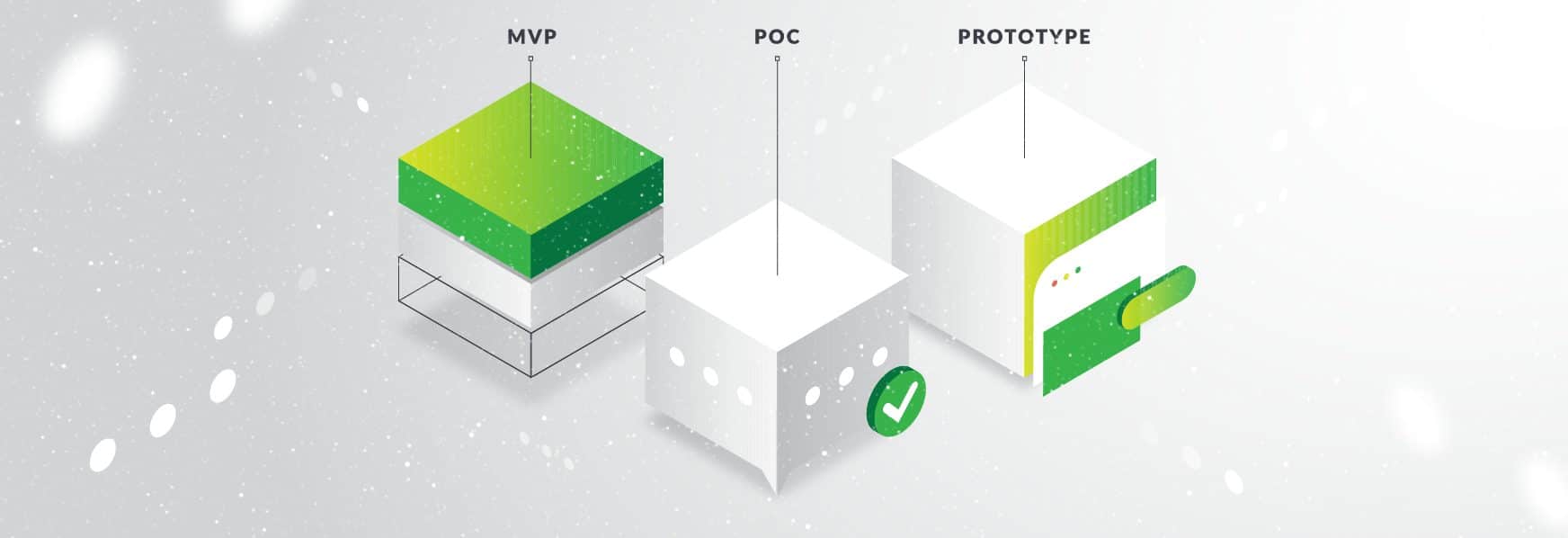MVP vs POC vs Prototype: What Does Your Company Really Need?
It’s no secret that on their way to launching the final product, startups have to make lots of small choices. From mockup creation to feature design and budget revision, everything matters. But deciding whether they should develop a minimum viable product, a proof-of-concept or a prototype might be one of the hardest. Don’t worry, we’ll help you out. pwrteams has been working with various startups and we know a thing or two about the MVP vs POC vs prototype debate. If you can’t decide which one to adopt or how they differ, have a look at our ultimate MVP vs POC vs prototype guide.
MVP vs POC

Both the minimum viable product and the proof-of-concept are methods startups use to verify the assumptions about their final product. They both help you save money and time but each has a different purpose.
An MVP is a version of a product that has just enough features to stay viable. In other words, it’s not packed with dozens of cool features and only has the core functionality. Why would somebody build that, you ask? Because the main reason startups fail is that they end up launching a product no one needs. The purpose of building an MVP is to get the minimum version of the product to the market. This way you’ll get to know whether it has any value at all. And if it does, you can start making money right away from your first customers, the early adopters. Now, filled with confidence and sufficiently funded, you are ready to pack up your MVP with additional features.
Unlike an MVP, a proof-of-concept is built to verify some minor technical assumptions before getting down to development. When you aren’t sure if your idea can possibly work, you build a POC, not a minimum viable product. A proof-of-concept will cover a small part, not the entire system, and users will never get to see it because POCs are used inside the company just to clarify which way to go with the development. But you can also consider building a POC to get the seed-stage funding.
POC vs Prototype

You might have noticed that these two are often used interchangeably. But a POC and a prototype really mean different things.
A proof-of-concept is a small project created to test whether a certain idea or theory about the product can be implemented. For example, when you don’t know if a feature can be built, you test the idea’s feasibility by creating a POC. And while building it seems like a waste of time, a POC actually helps you save money: knowing if something possibly works leads to a lower risk of failure. A POC is like small research that gives you green light to go further with the development of a product.
Similarly to a POC, a prototype’s main purpose is to help you make decisions about product development and reduce the number of mistakes. But it does differ. While a POC offers you a model of just one product’s aspect, a prototype is a working model of several aspects of the product. The development team usually uses prototyping to discover errors in the system. By building a prototype, they test the product’s design, usability, and often functionality. With a proof-of-concept, you don’t get to do all of that because it’s smaller and can verify only a single issue.
MVP vs Prototype
Both a minimum viable product and a prototype are models of the system your development team is going to build. But if an MVP feels like a separate product itself, a prototype is more of a draft. An MVP is a minimum version of the final product and it’s delivered to the market right away. This means that it has to be simple and well-polished, without any bugs or other problems. Prototypes, on the other hand, are created for the sake of finding those errors and often are far from being perfect.
Unlike an MVP, prototypes usually do not make it to the market, but they still get to be in the customer’s hands. Since the main goal of a prototype is testing, your potential users are among those who carry out the task. Building a prototype helps you get a sneak-peek at how real people will interact with your product. The development team can gather the customers’ feedback and make changes to the prototype or just create a new one. Usually, before the final launch, you get to build a whole lot of prototypes with different scopes and content. Prototyping is also useful in coming up with new ideas about the product. With a prototype, you can attract investors and later build a minimum viable product based on it.
Who Won?

Though it was fun to watch the MVP vs POC vs prototype battle, there are no winners or losers here. Since all three have different goals, they can be easily combined with each other. When you don’t know if an idea can be brought to life, start with building a POC. Then you go on by making the very first prototype to test the general look of your system. This prototype can later become a minimum viable product that will be delivered to the market. And then you go through several cycles of prototyping again before the final launch of your product.
So, before building a minimum viable product, a proof-of-concept or a prototype, what you really need to do is ask yourself the following questions:
- What do I want to verify? How big is my idea?
- Who is my target audience for this project? Whom do I want to impress with it?
When your project is small, used inside the company to confirm the feasibility of some idea and you are looking to get your very first funding, choose a POC. If you need to confirm your assumptions about the product’s value and impress the customers, build an MVP. If you want to test the system and wow the investors, go with an interactive prototype.
But regardless of what you choose: an MVP, a POC or a prototype, don’t forget that the project’s success lies on the shoulders of those who build it. Someone like an extended team of professional software developers and testers, for example. Contact pwrteams to get a quote!


